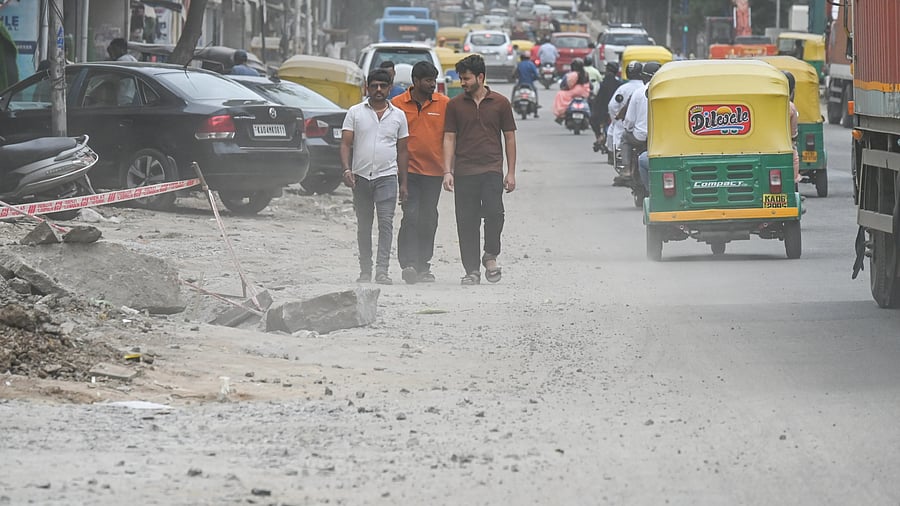
Construction and demolition waste is one of the biggest contributors to the city’s dust problem, the video states. Credit: DH FILE PHOTO
A new docu-series hopes to throw light on Bengaluru’s worsening dust problem. According to studies and analyses, dust contributes to 20% of the city’s air pollution.
The three-part series is a collaboration between Unboxing Blr and Bengawalk, a creative agency that focuses on urbanisation and climate change.
The first part of the series went live on October 31 on YouTube and has already garnered over 50,000 views. It follows Bengawalk founder Pravar Chaudhary who tails trucks ferrying construction and demolition (C&D) waste across the city on a two-wheeler.
The video, titled ‘Why is Bengaluru so dusty’, begins by highlighting how the city’s streets are lined with rubble. “All the surfaces look brown,” Chaudhary states. He goes on to point out that “the business of buying and selling debris” is one of the biggest contributors to the city’s dust problem.
Over 15 minutes, Chaudhary explains the process of how the debris is generated and disposed of. The waste is generally collected from construction sites by trucks hired by the building contractors. These trucks belong to companies that specialise in disposal of debris.
The waste “meets one of four ends”. It is sometimes just thrown anywhere — on footpaths, by lakesides and under flyovers. The other three options include seven designated C&D waste sites across the city, stretches of low-lying land and an official recycling plant (less than 1% of the waste ends up here). The video details the ethical and environmental implications of each of these disposal options.
“We spoke to over 20 people to understand the nuances and get a complete picture of the issue. What emerged was striking: while there is a legal process for disposing of C&D waste, it’s also the most expensive option — nearly twice the cost of dumping it illegally. As a result, many in the construction industry are facing difficulties,” says Malini Goyal, co-founder and CEO of Unboxing Blr.
The video goes on to explain how waste is affecting the city’s air quality, its impact on health and what the government can do, and offers suggestions on the best way to get rid of C&D waste.
Air quality expert, R Subramanian explains the contribution of dust to particulate matter (PM). “Its contribution to PM 10 (particles with a diameter of 10 microns or less) is much more significant than to PM 2.5 (2.5 microns or less),” he says, adding that the latter has a more significant impact on health as it is deposited into the lungs.
However, Dr Ravindra Mehta, pulmonologist, points out that chronic dust exposure causes allergic rhinitis or hay fever, allergic bronchitis and asthma.